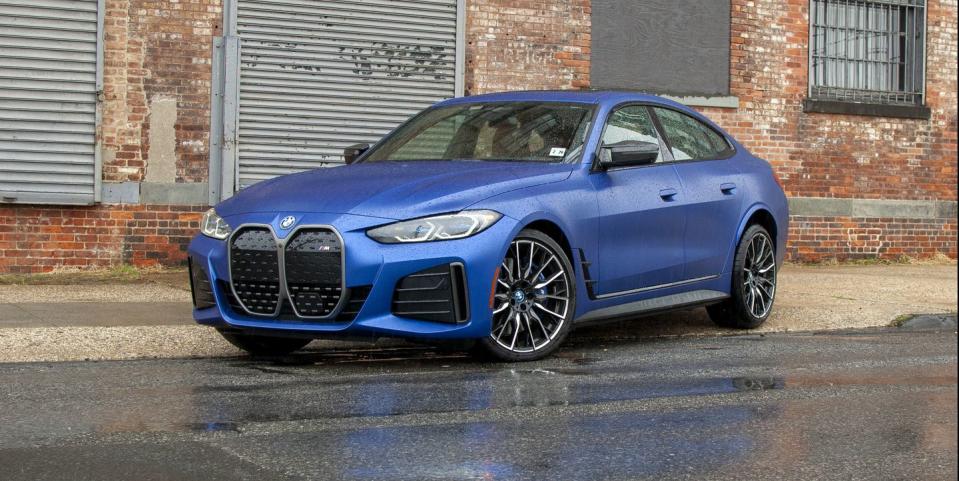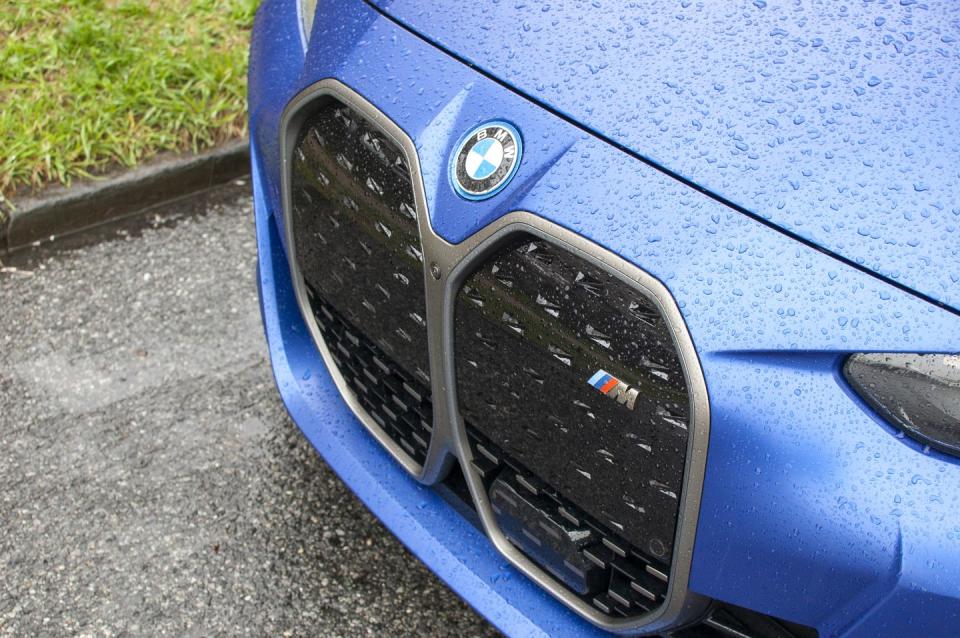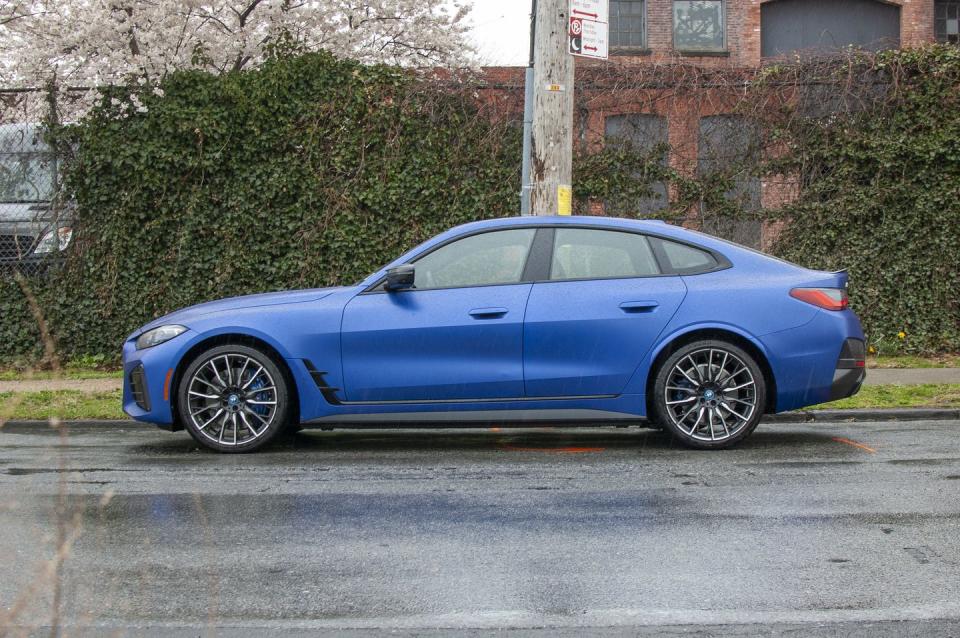The BMW i4 M50 Is a Brutally Quick EV Daily Driver

I can't believe how much attention the BMW i4 gets. Maybe I should've expected it. In New York City, a late-model BMW vies with Infiniti to be the default choice for a young man with a taste for crackle tunes and stop light burnouts. One interaction was particularly memorable—early on a Saturday morning, I was waiting at a light, when a guy in a last-gen 3 Series stopped alongside me and shouted "Oh my god! That's my dream car!" and drove off, wishing me a blessed day. I wonder if he realized this i4 M50 is not an M3, that this is the electric one.
Certainly, this car, with its enormous kidney grilles and $3600 Frozen Portimao Blue matte paint isn't subtle. For all of its flash, though, this is a much more conservative design for an electric car than what we're used to from BMW. The i3 and i8 have done their jobs. BMW is moving on.

Quick refresher: The i4 is an electric 4 Series, built on the same platform and sharing most everything except a gas tank and an engine. The grille is covered up, and inside, there's a different gauge cluster and a newer version of iDrive, both sharing a beautiful curved display panel. The gas-powered 3 Series will get the same screen for the 2023 model year, and presumably the regular 4 Series will get the same.
There'a a strong argument for why an EV shouldn't share a platform with an internal-combustion car—the compact nature of electric motors allows automakers to be clever with packaging, creating a car with a spacious interior and a small footprint. See the Hyundai Ioniq 5/Kia EV6, Lucid Air, and everything from Tesla for a good example of this. Hell, even BMW's own iX crossover is a good example of EV packaging. Going with shared underpinnings can be smart, though. It's cheaper to develop one car with two powertrains rather than two entire cars, and it's easy to explain to potential customers that the i4 is just a 4 Series Gran Coupe, but electric. BMW tried the dedicated layout thing with the i3 and i8. This is something different.
The platform BMW uses for everything from 2 Series coupe to X7 was designed with electrification in mind, and in the i4, the 83.9-kWh battery pack integrates neatly in the floor. A consequence of this is that the current 4 Series Gran Coupe in gas and electric forms is quite tall. The black lower cladding hides some of that height, and you really don't notice it in isolation. Only when you park an i4 next to a previous-gen 3 Series does it look massive.
Where BMW's previous i cars were quite experimental, the i4 is essentially the classic BMW recipe, just with an electric motor or two totaling 536 hp in the M50. The i3 and i8 previewed the future as it could be; the i4 is the more conventional present, though that's not a bad thing. Think of the i4 as being, essentially, an electric 3 Series with a hatchback, and you realize just how broad the appeal is.

This isn't a full M car, but rather, an M Performance model. Here at Road & Track, we're still smarting over BMW's decision to put M badges on lesser models, though we must concede that these are compelling offerings, faster than standard models while offering a bit more everyday usability than true M cars. Here, the line between M Performance and M is thinner than ever. The i4 M50 is quicker to 60 than a rear-drive M3 Competition. It's got that EV gut-punch acceleration Tesla introduced to the world with the Model S P85D. And riding on these optional 20-inch wheels and staggered Pirelli P-Zero PZ4 tires, country-road pace is fairly astonishing. Somehow, the i4 M50 has the same razor sharp front end as the M3 and despite weighing 1146 pounds more (for a total of 5063 pounds) than an M3 xDrive. Tje i4 legitimately doesn't feel any heavier in reasonably spirited driving.

 Yahoo Autos
Yahoo Autos 